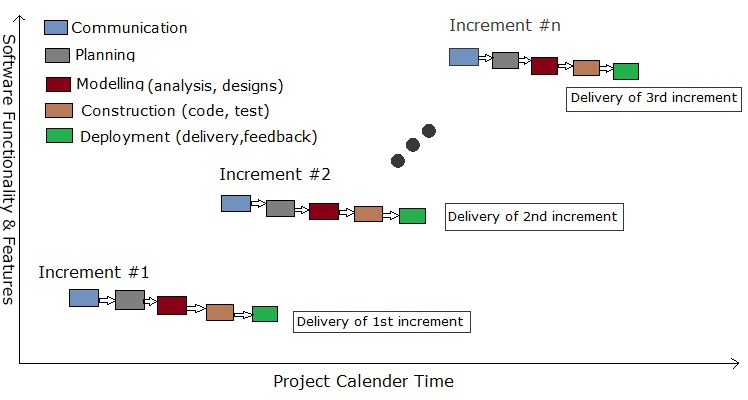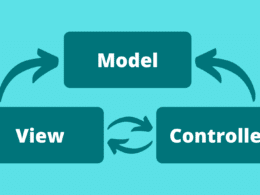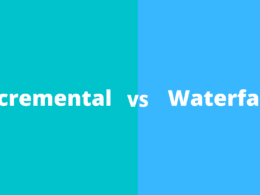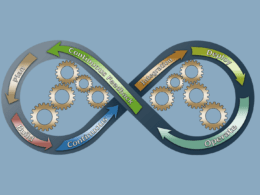Want to find out what an incremental development model is, and what advantages it can bring for your software engineering process? This is the perfect guide for you!
In the software engineering discipline, there are multiple software development processes one can follow in creating a particular program systematically. Some of which you might have even heard of!
Essentially a software development process is an approach to divide the entire software development work into smaller, parallel or sequential tasks or subprocesses to enhance product management and make the work more systematic. These processes represent a conceptual view of the entire software development life cycle (SDLC). Thus, it shows the developer each software development step or task that they have to perform. However, each of these software development processes differs in terms of the order of these steps and their structure.
One such, process that we’re focusing on in this post is the incremental development process. On that note, in this post, we’ll explore what exactly is this incremental development model and its advantages and disadvantages in software engineering.
Enough said, let’s get right into it!
Table of Contents
What is an Incremental Development Model?
Overall, similar to other software process models, the incremental model comprises the 4 main stages or development activities, which are specification, development (contains design and implementation), validation, and evolution. So, it’s a software development method in which the system is designed, implemented, tested and improved gradually and in increments until its finishing point.
Essentially, this is what sets it apart from other process models and is the primary characteristic that makes it suitable for the development of a particular software. The system is developed in several increments until the final product (Final version) is completed.
Therefore, like in the diagram above, each increment introduces new added components or functionality to the system and each of the versions of these increments is termed as builds. So, certain processes, which includes specification, development and validation are interleaved, which means that each increment of the system goes through these steps sequentially.
Each increment of the system has to be evaluated and tested completely, especially by the customer, user or proxy, and fulfil the requirements at that stage before moving on to the development of the following increment. Thus, with each new increment or implementation after each test, features can be added till the final product is achieved and delivered to the customer’s satisfaction.
Advantages of the Incremental Development Model
1. Allows the Use and Deployment of the System’s Early Builds
The first benefit or reason the incremental development model is employed is so that clients can obtain value and evaluate or test systems earlier in the development process. Especially with an agile method, an incremental method enables partial utilisation of the system, so we can avoid an extensive development time. Thus, the developers can begin allowing access to the product with limited functionalities, which is especially useful for testing purposes.
So, the user gets to see, use, and interact with these features being developed very early in the development cycle, then provide their thoughts, review, and suggestions for further alterations. Thus, serving as the best approach for a customer that doesn’t have clear system requirements needed for the operation.
In contrast to the waterfall development model where it only has a single delivery which is the final system, for incremental development, as there are multiple increments, each increment has its own deliverables. So, each increment delivers part of the required functionality, where the most important or urgently-needed requirements are incorporated first, especially user requirements.
Hence, typically the first version (initial version) or deliverable of the incremental model comprises the core product, then the supplementary features will be developed and incorporated in the following increments. For example, the main or base feature of a Real Estate Marketplace can be its interface, pages and the layout of real estate listings and postings available.
Overall, by completing it early, the customer can test and use the base system’s early version and help them grasp the idea of the end system and the following requirements. Simultaneously, delivering the system in operational parts, can boost the morale of the clients or software buyers, since they’re being included in the development process actively and can see their requirements being fulfilled progressively. Plus, they can see the progress made and the degree of completion of the program’s implementation.
Overall, this shows that the incremental development model is important for products that need to be unveiled to the market early. This is especially crucial for a marketplace system that needs to gain a large initial audience or user base. Hence, why developers often begin and place a higher priority on the registration module so that the client can begin their marketing, by collecting a mailing or waiting list of users through the registration system. So, when they officially unveil the system they’ll have a large initial user base uploading real estate listings and desired property posts.
2. Clients and Stakeholders can Manually Review and Evaluate the System’s Earlier Builds Faster
Moving on, by breaking the system into multiple incremental builds, the clients and stakeholders can manually review the system’s earlier versions faster than possible with a waterfall model or most other development processes. Thus, allowing the stakeholders to determine if their requirements are being met. So, this helps the developer to obtain user and customer feedback on the system and progress made. Thus, it’s a more realistic evaluation approach where the clients can obtain a practical utilisation of the system.
Plus, it’s easier for both the customer and developer to test and debug these smaller iterations. For example, they only have to focus on the registration system’s operation and interface when they reach that module. Also, as mentioned earlier, high priority requirements or the main parts of the system are included and developed first, hence these sections undergo the most evaluation and testing by the customer. This ensures the final product/system is usable and there’s a lesser chance for failure.
Plus, the customer is free to suggest changes to the operation of these pages and interface, so the developer can rectify them before proceeding to the next iteration. Thus, this crucial component of the system is checked after every iteration, ensuring it fulfils the customers changing requirements and isn’t subject to any errors. So, this can massively reduce the risk of an overall project failure, especially if there are any changes or additional requirements.
Therefore, this incremental model is more suitable for a system where the requirements are clear and can be implemented in phases. Hence, this makes it a limitation for systems where the requirements and incremental components are unclear. However, this can be avoided through thorough preliminary research and planning. Additionally, this makes it clear that an incremental model is generally more suitable for smaller-scale systems with a well-defined and simple scope.
3. Earlier Builds Can Act as a Prototype for Clients to Elicit Requirements
When developing any system for a client, developers need to provide space for the user’s additional requirements. Since in the incremental software development model, the software is being implemented, built and tested incrementally, with each increment or implementation after each test, features can be added till the final product is achieved and delivered to the customer’s satisfaction.
Therefore, the customer can treat these increments as prototypes for them to test. From there, they can elicit and come up with additional requirements and improvements for the system. Thus, for a customer without a clear idea of the systems operations, these early prototypes, help give the customer a usable product, visual understanding, a better picture of how they want their final product to appear and behave.
This allows the customer or end-user to evaluate, comment and give feedback regarding the early implementations. Based on this feedback, it helps the developer to evolve the software through a few versions.
For instance, after seeing the system in practical use, they may have suggestions for improvements, such as a better UI design suited to their predetermined branding. Alternatively, the client may prioritise different user data to be collected within the data mining application. So, with the modules being implemented individually, the client can change the requirements accordingly where they see the best fit.
Therefore, with an incremental model, the system is more flexible to functionality changes and ensures risk management. Hence, in the event there are system requirement changes, the cost and risk of failure can be reduced, as the risky components are identified and handled earlier. It’s both easier and cheaper to incorporate these changes for the next increment’s deliverables. Thus, this appeals to a customer’s changing requirements.
Overall, through an incremental model, the end product can be more accurate and ensure that all the requirements that the client initially stated and later elicited are fulfilled.
Disadvantage: More Suitable for Non-Complex Software That Can Be Developed in Phases
Therefore, this incremental model is more suitable for a system where the requirements are clear and can be implemented in phases. Hence, this makes it a limitation for systems where the requirements and incremental components are unclear. However, this can be avoided through thorough preliminary research and planning. Additionally, this makes it clear that an incremental model is generally more suitable for smaller-scale systems with a well-defined and simple scope.
Conclusion
To recap, an incremental development model is essentially a software development process where the program is developed in increments. So, at the end of every increment, there’s a deliverable in this case it’s typically a functional part of the system with limited features, also known as builds.
Therefore, this guide then goes into more detail explaining what exactly is the incremental development model as well as its noteworthy advantages in software development.
That being said, we hope that you’ve found value in this guide and it’s been helpful in bolstering your understanding of software development processes and the incremental model.
Feel free to share this post with your fellow coders and software engineers!


















